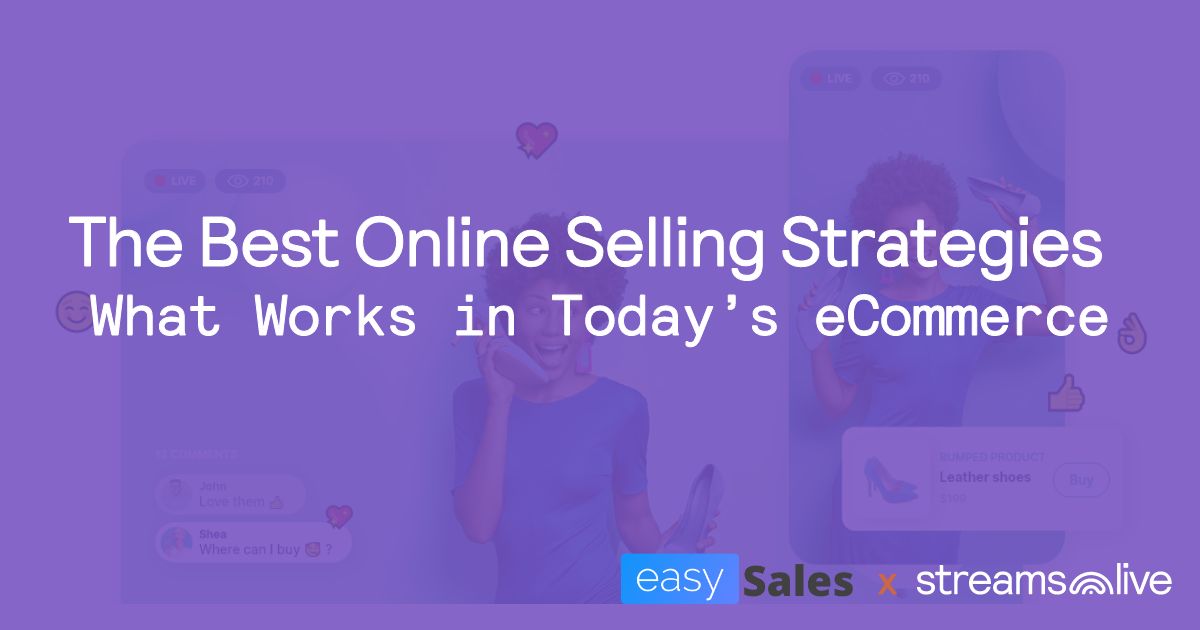
The last few years of technological evolution, combined with more than two years of pandemics, have fundamentally changed the way we buy and sell products. And as digital transformation takes hold, online businesses are forced to constantly adapt. Their major challenge is? Profit. How? By attracting new customers from multiple channels and retaining existing customers.
We see two main approaches in eCommerce to generate profit:
- Attracting new customers – and here, marketplaces bring real support for any multi-channel sales strategy
- Loyalty – by convincing current customers to spend more, and here we cannot fail to mention the areas of up-selling, cross-selling, and down-selling.
Our partners from easySales – the team that develops an accessible and unified platform for automation management and the centralization of activities on popular marketplaces, have noticed that the share of sales from marketplaces has increased over the last few months.
This article shares their insights and will help you discover quick solutions for expanding to multiple marketplaces that are now on the market, and what are the online selling strategies that work in eCommerce in 2022.
Looking at current user behaviors and patterns, it is clear to us that the success of an online business depends overwhelmingly on multi-channel selling.
1. Multichannel is the future – but it is also the present
In addition to Google, Marketplaces have also become a kind of search engine. Your customers look at several marketplaces before deciding to buy a product – just like you do any time you buy something online. Therefore, the presence of your products on various platforms is necessary. Indeed, marketplaces are an option you should not omit.
Choosing the right marketplace is crucial to the success of your business. You can quickly access an audience of customers looking for your products, without major investment in marketing and advertising, and the know-how obtained can be reinvested in your other actions on your own website.
Among the benefits of implementing a multi-channel strategy, we point out, first of all, the ability to access a wider customer base, already loyal, the improvement of their shopping experience, and of course, the presence of your brand in several markets. Implemented correctly, a multi-channel strategy automatically generates profit, without major marketing efforts.
2. A correct, intuitive, and functional online store
A functional website can be the most important part of your multi-channel strategy, especially if your brand is well-known. The anchor that keeps your eCommerce ship steady, regardless of the fluctuations and waves of other marketplaces. It’s never been easier to buy a product online, but the quality and functionality of your store are essential. The quality of your products may not count if your website works poorly and makes the consumer experience difficult.
Optimize the site for search engines. Basically what SEO (Search Engine Optimization) does is apply techniques and strategies to your website content so that it is listed on Google in the best possible position.
SEO helps:
- search engines to do their job better
- users to find the information, images, and products they need
- small companies to compete with large companies
- reduce marketing efforts and online promotion costs
3. Social media is taking over

We are already at a time when Social Media platforms, especially Facebook and Instagram, no longer urge buyers to access a brand’s website but take care of the entire purchase process. Customers can discover and buy products without leaving the apps. Social Media is increasingly competitive, so it would be preferable to try new things, and test new platforms to be aware of what is happening. For example, the last few years mean a migration of young users from Facebook to TikTok. Last year, for example, it would have been much easier to grow a strong community on TikTok than it is today. So always be trendy, try new things, and focus on customer loyalty.
4. Mobile-friendly experience

Source: Canva
Most online shopping is done directly from mobile. According to Statista, for online purchases, almost 3/4 of all eCommerce sales (72.4%) came from mobile devices in 2021. At the same time, users check their mobile phones to compare prices and offers, even in the physical stores they visit, which is why your website must have a mobile-friendly interface.
Phone screens have limited space, opt for simplicity and large buttons, and make the most out of the space. You can even leave blank spaces on purpose because it gives the site a clean and sophisticated look. Also, users can quickly identify the right buttons and links.
When it comes to design opt for drop-down menus, pre-populated fields, and simple checklists.
What else you need to keep in mind is to keep the number of pages as low as possible and avoid pop-ups.
Pop-ups slow down the site’s loading speed and make it difficult for users with multiple windows to navigate. If you have a physical store enter the location and working hours, then the Click-to-Call functionality is important. Add a direct button to call Customer Service, links to your Social Media accounts, and keep in mind to use clear pictures of your products on Facebook or Instagram.
With the right strategies and tools, building customer loyalty and convincing them to spend more can be highly effective, affordable, and simple. And we mention here: upselling, cross-selling, and down selling.
Upselling
This technique involves persuading the customer to buy a premium, more expensive product instead of the one they originally wanted to purchase, thereby increasing the profit on the sale. For example, your customer added a dress from last year’s collection to the cart. Upselling involves showing him products similar in style, material, and color, but more expensive and from the latest collections.
Upselling helps you build a closer relationship with your customer. Focusing on helping your customer “earn” upgrades or premium products that ultimately provide more value and make them feel like they got a better deal will prove to be a positive relationship tactic, which also generates additional income. You must know – and we’re sure you already do – that it’s easier to sell to existing customers than to look for new customers.

How to upsell? By showing the best-selling products and offers. This is a simple and effective way to increase the average transaction value and increase income for your online store.
Do you know the “customize your product” option available on some sites? Well, this is an upsell technique because every customization you add increases the price. Daily deals are also a great way to upsell and attract returning users to your site. Here you also have an effective way to sell recommended products, because they give the feeling of “urgency” and exclusivity when the product is “limited” or available “only for one day”. At the same time, we can add newly listed products and seasonal offers to the list.
Cross-selling
This technique is similar to the upselling we talked about above and involves selling additional products or services that may be related to the first purchase. Cross-selling identifies products that satisfy additional or complementary needs that are not met by the original item. For example, a belt may be sold to a customer who purchased a dress.
In eCommerce, cross-selling is often used on product pages, but also during the checkout process. It’s a highly effective tactic for generating repeated purchases.
When done right, cross-selling can add value to existing relationships, establish credibility and increase revenue.
Down-selling
This technique is used when the customer, for some reason, decides to withdraw from the purchase. In this case, you can offer him a cheaper product that has a better chance of being accepted. The goal here is to win a customer, even if the profit isn’t immediate.
Regardless of the technique you use, the secret to success starts with your approach. Know your audience. You may already know some details about your customers, but it’s important to know your audience well. Use information about your customers and analyze their feedback. Make sure their experience is a positive one and capitalize on it.
Conclusion
The strategies mentioned above are not always simple, and for their effective implementation, you have to show a lot of tact, know how to choose the right time frame, and know how to empathize with the client. But not using these tactics means losing money.
That’s why we encourage you to offer your customers relevant products, ensure they receive the full range of services and achieve the best possible ROI.





